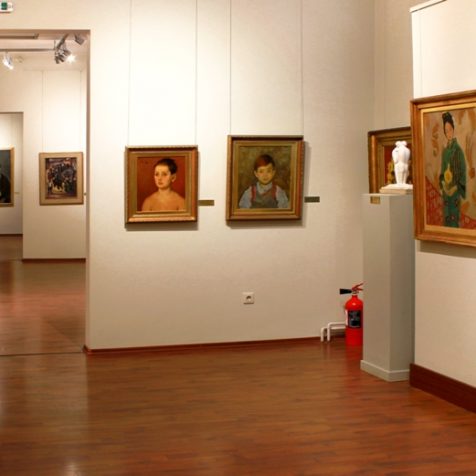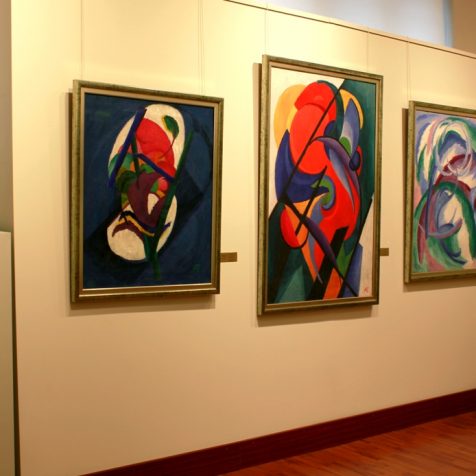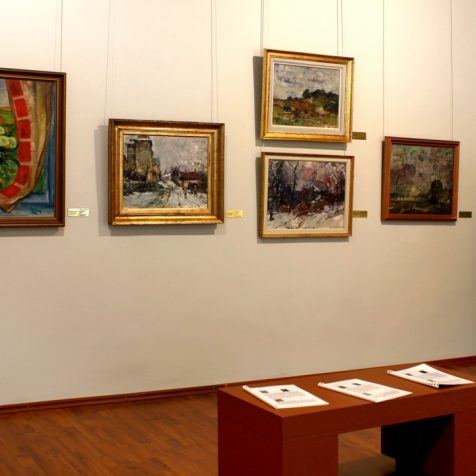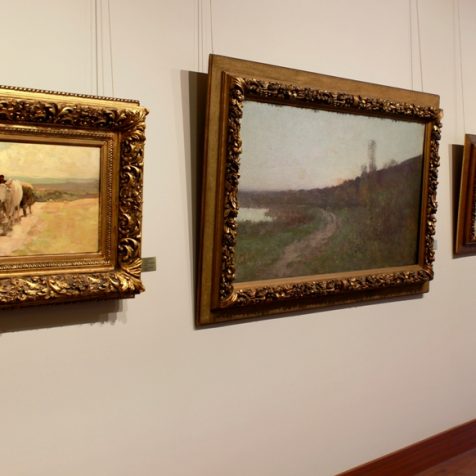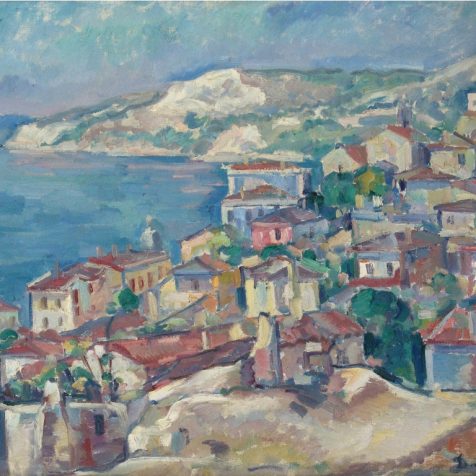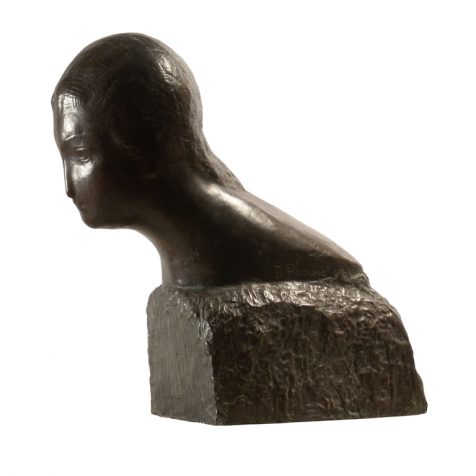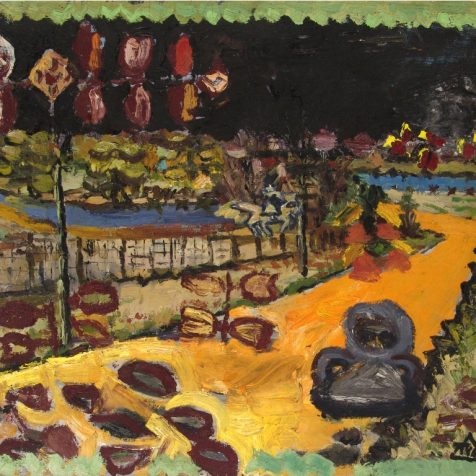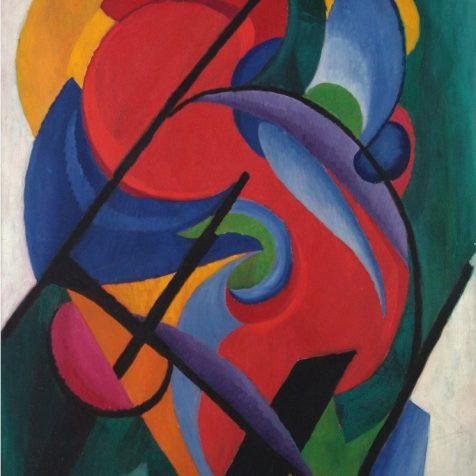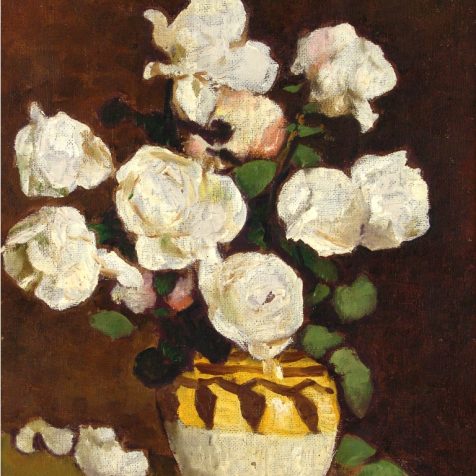Modern Romanian Art Gallery
The Modern Romanian Art Gallery (1850-1950) from Târgu-Mureş offers an exciting pilgrimage through an entire century, animated by eloquent chromatic tones and expressive volumetric shapes of the Romanian modern art, a period perceived with chronological generosity, starting from the middle of the 19th century and ending with the first years following the Second World War.
The inferior limit of the period encompasses the moment in which the Romanian painting started to synchronize itself with the European painting, a moment that meant a change of attitude and the setting of a new behavioural pattern. The upper limit marked the end of a very prolific and consistent phase, with a substantial contribution to the evolution of the Romanian art, since that is precisely what the time between the two World Wars represented. We can thus perceive an obvious process of fulfillment, of completion, from crystallization to the moment of structuring an individual identity, with clear interferences and similitudes, as compared to the already consecrated movements of the European art.
The selection points out phases of the Romanian modern art, starting with Theodor Aman and ending with the Transylvanians, the ones that emphasize the local colour and the specificity of the area in between the Carpathian Mountains.
The second half of the 19th century shows the efforts of moving to modern art through Theodor Aman and then regimenting the modernism within the Romanian art and the absolute insertion of this latter one in the European fond, through Nicolae Grigorescu and Ioan Andreescu. On the other hand it also meant the failure of some artists like Sava Henția, Constantin Dumitru Stahi or Emanoil Bardasare to overcome some limits and maintain instead an academic level of manifestation.
A decisive phase for the Romanian painting and sculpture and their entrenchment in modernism is the passage between the 19th and the 20th century, through Ștefan Luchian and Dimitrie Paciurea. The major contribution of Luchian stands in the area of amplifying the light dose in the alchemy of the colour, sincerely rendered, revolutionizing and influencing an important part of the Romanian artistic phenomenon, without being a teacher or launching theories.
In his turn, Dimitrie Paciurea is part of a certain sequence of the Romanian art, which we could call of the “singulars”. Believed to oscillate between impressionism and symbolism, between classic and modernism, between expressionism and surrealism, the uniqueness of his creation consists precisely in this personal form of expression which the sculptor assumed, regardless of the contemporary opinion, maybe even its lack of success. Though he was a good teacher, he never taught any disciples, and therefore he had no followers to continue his line of vision. Nevertheless, by his contribution, the Romanian sculpture developed similar personal styles or derived from it.
The visual journey is then led by a series of artistic personalities who activated between the two wars. Some of them continued their previous activity and now are in their phase of full maturity, like Gheorghe Petraşcu and Theodor Pallady. Others find themselves some friendly affinities of conception and artistic vision, creating some groups, like in the case of “The Group of the Four”, reuniting Nicolae Tonitza, Francisc Șirato, Ștefan Dimitrescu and Oscar Han. Others don’t follow the tradition and seek new formulas of expression, radical ones, like the representatives of the avant-garde: Max Herman Maxy and Hans Mattis Teutsch. Some abandon themselves to the picturesque Black Sea shore with its scorching Dobruja and the fascinating Balcic, in search for individual forms of interpreting the scenery and the strange characters of these lands, in an impressionist, post-impressionist – cézannesque or fauvism kind of key, with different accents on drawing, colour or structure, according to their personality, as proven by Nicolae Dărăscu, Jean Alexandru Steriadi, Lucian Grigorescu, Iosif Iser, Petre Iorgulescu-Yor and Vasile Popescu. Others make their own way along the line of unaltered realism, with a clear and sober vision on life in general and, in detail, insisting on understanding the world of the Romanian village as unveiled by Camil Ressu. Or, some of them let themselves be driven by feelings inspired by the urban scenery or the waters’ realm, like in the case of Marius Bunescu.
Then, two of the directions emerging in the inter-wars period and continued afterwards, following the path of the sensitivity of the colour on the one side and on the other side marching along the road of compositional strictness and seriousness together with the message carrying profound symbolism, evoking the old classics through the personality of the two artists – professors Alexandru Ciucurencu and Corneliu Baba. This nucleus is completed by the works of the one who, though belonging to the post-war period as preponderance of works, through the force of the synthesis and the very personal expression, rises above his time, respectively Ion Ţuculescu.
Some of the essential artistic personalities from the region within the Carpathian arch, mentors, disciples and creators of new tendencies, belonging to the School of Fine Arts in Cluj Napoca and the artistic centre in Baia Mare, like Alexandr Popp, Aurel Ciupe, Romul Ladea, Ion Vlasiu, Eugen Gâscă, Tasso Marchini, Ziffer Sándor, Szolnay Sándor, proved their contribution to the Romanian modern art.
The Romanian Art Gallery is temporary closed due to the restoration of the Palace of Culture. Thank you for your understanding.

